You might not realize how much Milan Fashion Week has transformed since its beginnings in 1958. It started as a local showcase, but now it's a global event that attracts attention from all corners of the fashion world. As you explore its evolution, you'll find that it's not just about the clothes anymore; it's about sustainability, technology, and cultural impact. So, what does this mean for the future of fashion? The answers might surprise you.
Origins of Milan Fashion Week
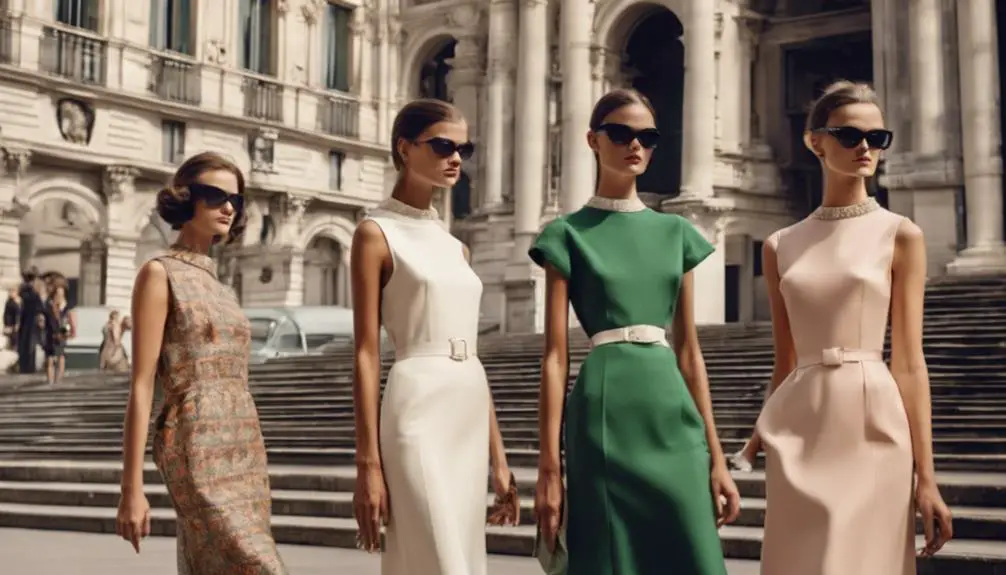
Milan Fashion Week officially began in 1958, thanks to the efforts of the National Chamber of Italian Fashion. Can you believe it all started way back in Florence? That's right! The Florence beginnings of Italian fashion date back to 1951 when Giovanni Battista Giorgini organized the very first runway event. It was like a magical moment, showcasing local designers to international buyers. Talk about setting the stage!
But as the years rolled on, something thrilling happened. Milan started to take the spotlight. By the early 1970s, the city became a powerhouse for prêt-à-porter collections, with amazing designers like Missoni and Krizia leading the charge. They really knew how to put on a show! You could almost feel the buzz in the air as everyone enthusiastically awaited the next designer showcases.
As the fashion scene grew, so did the importance of Milan Fashion Week. By the late 1960s, it became an essential part of the global fashion calendar, joining the ranks of New York, London, and Paris. Crazy, right? It wasn't just about women's collections anymore; men's fashion joined the party too! With a semi-annual schedule, Milan Fashion Week quickly adapted to the ever-changing trends and demands of the industry.
Growth as a Fashion Hub
As one of the world's leading fashion capitals, Milan has transformed into a vibrant hub that attracts designers, buyers, and fashion enthusiasts from around the globe. You might wonder, what makes Milan so special? Well, it all started back in 1958 when Milan Fashion Week officially kicked off. Since then, it's become a crucial player in the global fashion calendar, sitting proudly next to New York, London, and Paris. This evolution mirrors the journey of iconic brands like Abercrombie & Fitch, which adapted to changing consumer preferences and market trends over the years, showcasing the dynamic nature of the fashion industry a history of evolution.
Thanks to the Camera Nazionale della Moda Italiana, which was established the same year, Italian fashion got a structured boost. This helped organize shows and promote the amazing talent that Milan had to offer. Fast forward to today, and Milan's fashion week pulls in a global audience, featuring over 40 shows every season! It's like a fabulous parade that transforms the city's iconic spots into stunning catwalks.
Milan's focus on ready-to-wear collections, combined with its strong manufacturing links, allowed designers like Giorgio Armani and Gianni Versace to shine in the 70s and 80s. And guess what? The city hasn't lost its spark! With a mix of established stars and fresh talent, Milan continues to grow as a fashion hub. Plus, the emphasis on the "Made in Italy" label adds that extra flair. So, whether you're a fashion newbie or a seasoned pro, Milan's global influence and exciting designer collaborations will keep you coming back for more! Isn't that just fabulous?
Iconic Shows and Designers
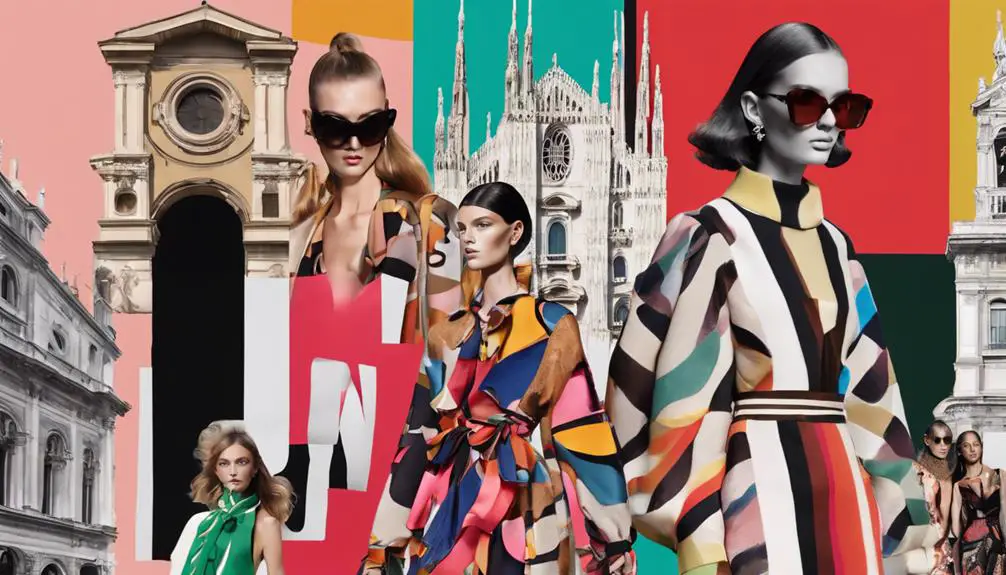
Fashion shows in Milan have become legendary, showcasing the creative genius of designers who push boundaries and set trends. Take Versace, for example. Remember that jaw-dropping 1991 show? It featured five iconic supermodels, and George Michael belting out "Freedom" was the cherry on top! That moment didn't just turn heads; it changed fashion history. And let's not forget the "Supermodel Reunion" show, which celebrated the Versace legacy by bringing back superstars like Naomi Campbell and Cindy Crawford, all in stunning celestial gowns. Talk about a tribute!
On the flip side, Moschino always knows how to keep things exciting. Their "Flower Power" runway dazzled everyone with floral-themed outfits, and Gigi Hadid's finale in a bouquet dress? Pure magic! Jeremy Scott's creativity shines through, especially in the 2016 "Welcome to The Car Wash!" show, where the runway transformed into a carwash. Who would've thought fashion could be so playful?
Then there's Ralph Lauren, who took things up a notch with his Car Garage Show, mixing luxury fashion and high-performance hypercars. How cool is that? Each show tells a story, whether it's honoring a legacy or showcasing wild creativity. So, when you think about Milan Fashion Week, remember these iconic moments and designs. They don't just reflect trends; they inspire the future of fashion. What's your favorite show?
Digital Transformation in Fashion
With the rise of digital technology, Milan Fashion Week has begun a transformative journey that reshapes how designers present their collections. Remember 2020? That year, the whole event went online from July 14 to 17 due to the COVID-19 pandemic. This shift marked a huge change in how fashion shows were conducted, allowing designers to showcase their collections through virtual presentations. Now, you could watch the latest trends right from your couch, no fancy invites needed! This evolution mirrors trends in other industries, like the growing interest in vintage fashion identification, which has become increasingly popular among fashion enthusiasts.
In 2022, Gucci took things up a notch by debuting with a jaw-dropping showcase featuring 68 pairs of twins modeling their designs. How cool is that? This creative twist highlighted how fashion shows can adapt in a digital world. It's like fashion meets a family reunion!
The shift to digital formats has truly reflected the fashion industry's ability to adapt to contemporary challenges. By embracing these changes, Milan Fashion Week has become more accessible to everyone. You don't need to travel halfway across the world to catch the latest styles. Designers, both established and emerging, can now reach a global audience and connect with fans through online engagement like never before.
Future Trends and Sustainability
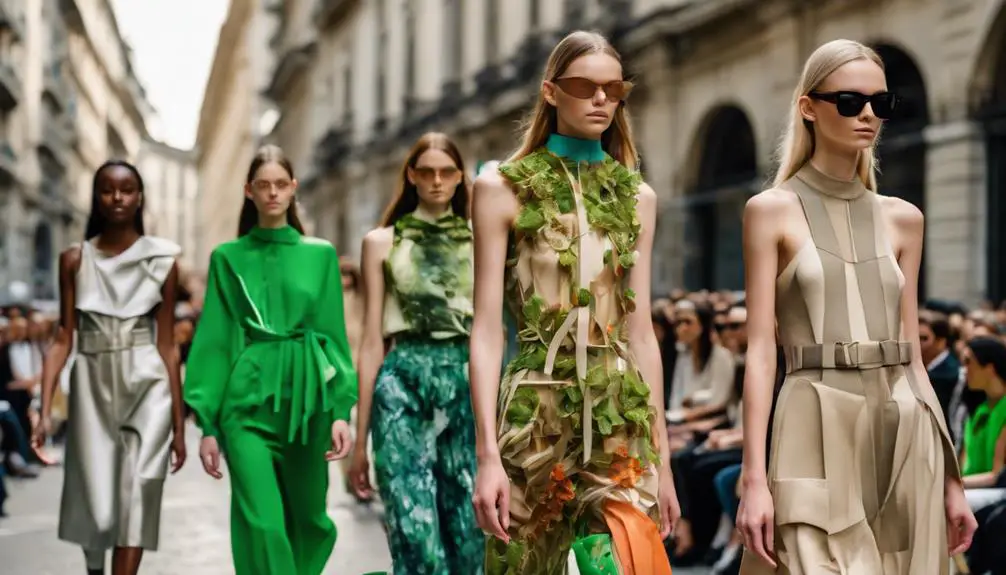
Amid growing awareness of environmental issues, Milan Fashion Week is stepping up its commitment to sustainability. You might've noticed that more and more brands are jumping on the eco-friendly bandwagon. This shift is all about creating responsible fashion that meets your demand for stylish yet sustainable choices. Who wouldn't want to wear something that looks good and does good, right?
Since that Greenpeace protest in 2014, where they called out big names like Versace for using harmful chemicals, the industry has been on a mission. Designers are now showcasing collections made from eco-friendly materials, focusing on quality without harming the planet. This mirrors movements in other sectors, such as FILA's introduction of vegan sneakers, which emphasizes ethical sourcing and sustainability (FILA's commitment to sustainability). Plus, the "Made in Italy" label is all about marrying traditional craftsmanship with modern eco-conscious techniques, which is pretty cool!
And let's not forget the impact of digital formats. The 2020 Milan Fashion Week went online, proving that fashion can adapt and reduce waste. Virtual events mean fewer resources spent on travel and materials, making it a win-win for everyone.
Emerging designers are also hitting the scene, bringing cultural awareness and sustainability to the forefront. They're paving the way for a future where fashion isn't just about looking good; it's about feeling good too! So, as you keep an eye on trends, remember that by choosing sustainable options, you're not just fashion-forward; you're helping create a better world. How awesome is that?
Frequently Asked Questions
How Did Milan Fashion Week Begin?
You'll find that Milan Fashion Week blossomed from a desire to showcase Milan designers' artistry. Its roots intertwine with fashion influences that captivated audiences, transforming the event into a celebration of style and innovation.
What Makes Milan Fashion Week Unique?
Milan Fashion Week's unique charm lies in its celebration of Italian craftsmanship and global influence. You'll witness innovative designs that blend tradition and modernity, creating unforgettable experiences that shape the future of fashion worldwide.
What Is the History of Fashion Week?
Fashion weeks transformed the world, launching trends like fireworks! You'll discover dazzling designer showcases that revolutionized style since the 1940s, enchanting audiences and setting the stage for what's next in the fashion universe.
How Did Milan Become the Fashion Capital of the World?
Milan became the fashion capital through its cultural shifts, economic impact, and designer legacy. You'll see how innovative craftsmanship and iconic designers shaped Milan's influence, making it a global fashion powerhouse that continues to thrive.
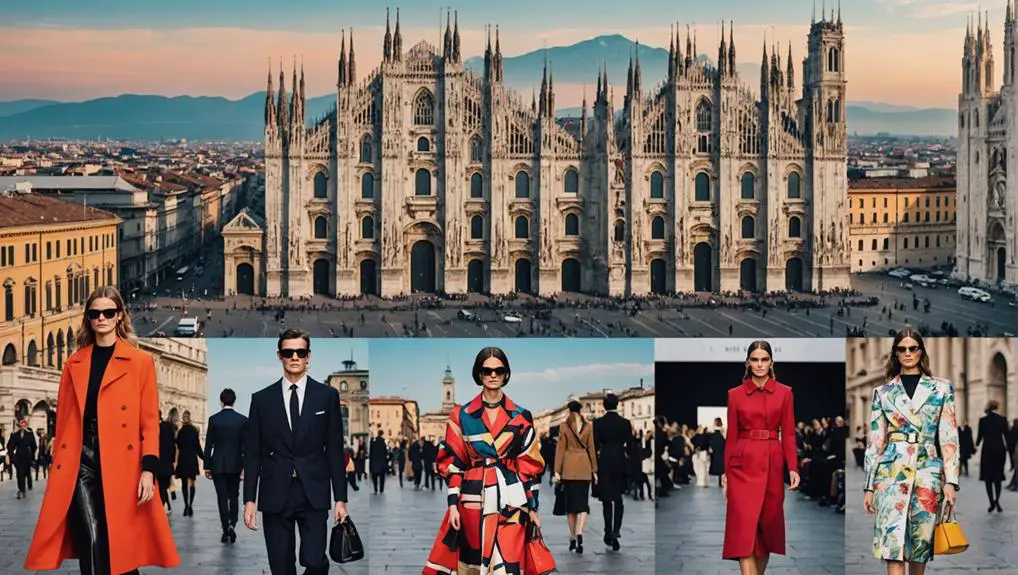

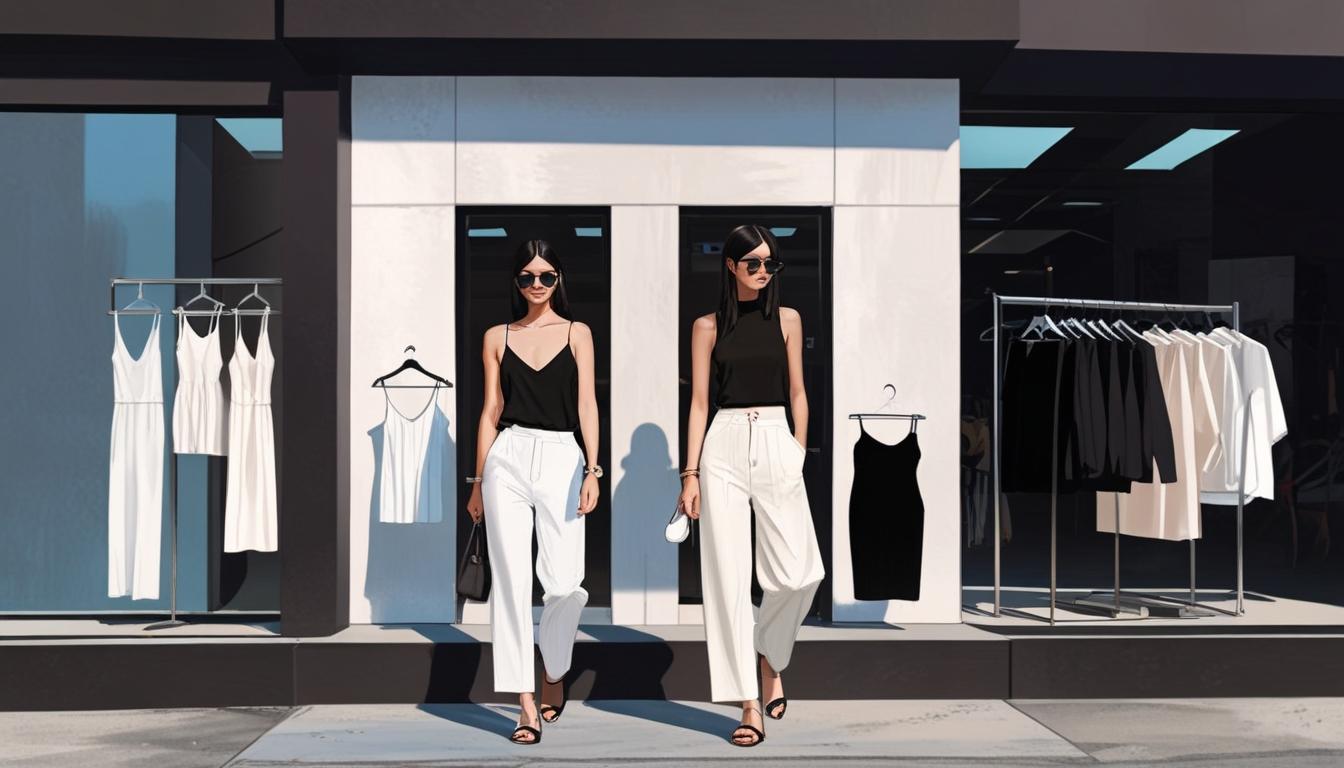
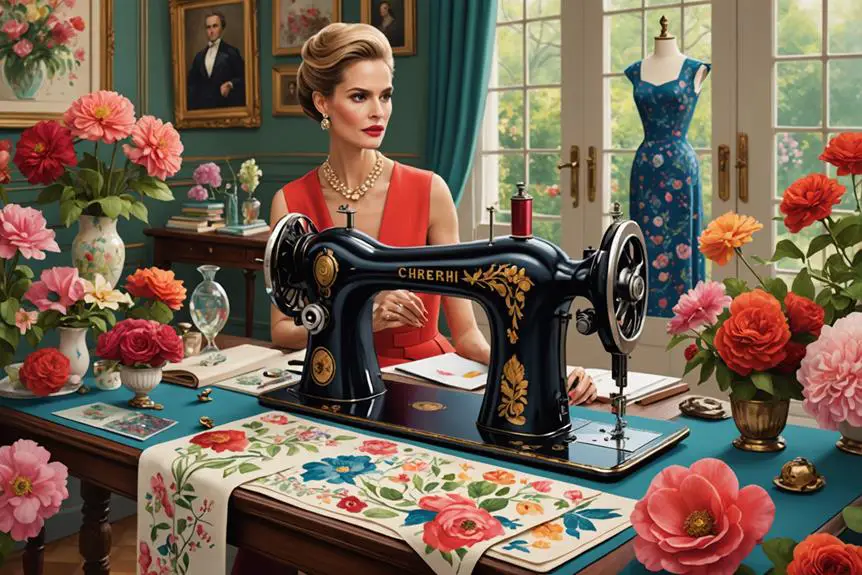

You made some really good points there. I checked on the web to learn more about the issue and found
most people will go along with your views on this web
site.
Hello it’s me, I am also visiting this web page regularly, this
web site is really good and the visitors are actually sharing good thoughts.
Your means of explaining the whole thing in this article is truly nice, every one can simply understand it, Thanks
a lot.
Hi there! This is kind of off topic but I need some help from an established blog.
Is it difficult to set up your own blog? I’m not very techincal but I can figure things out pretty fast.
I’m thinking about making my own but I’m not sure where to start.
Do you have any points or suggestions? Thanks
Thanks for sharing your thoughts about paito hk lotto.
Regards